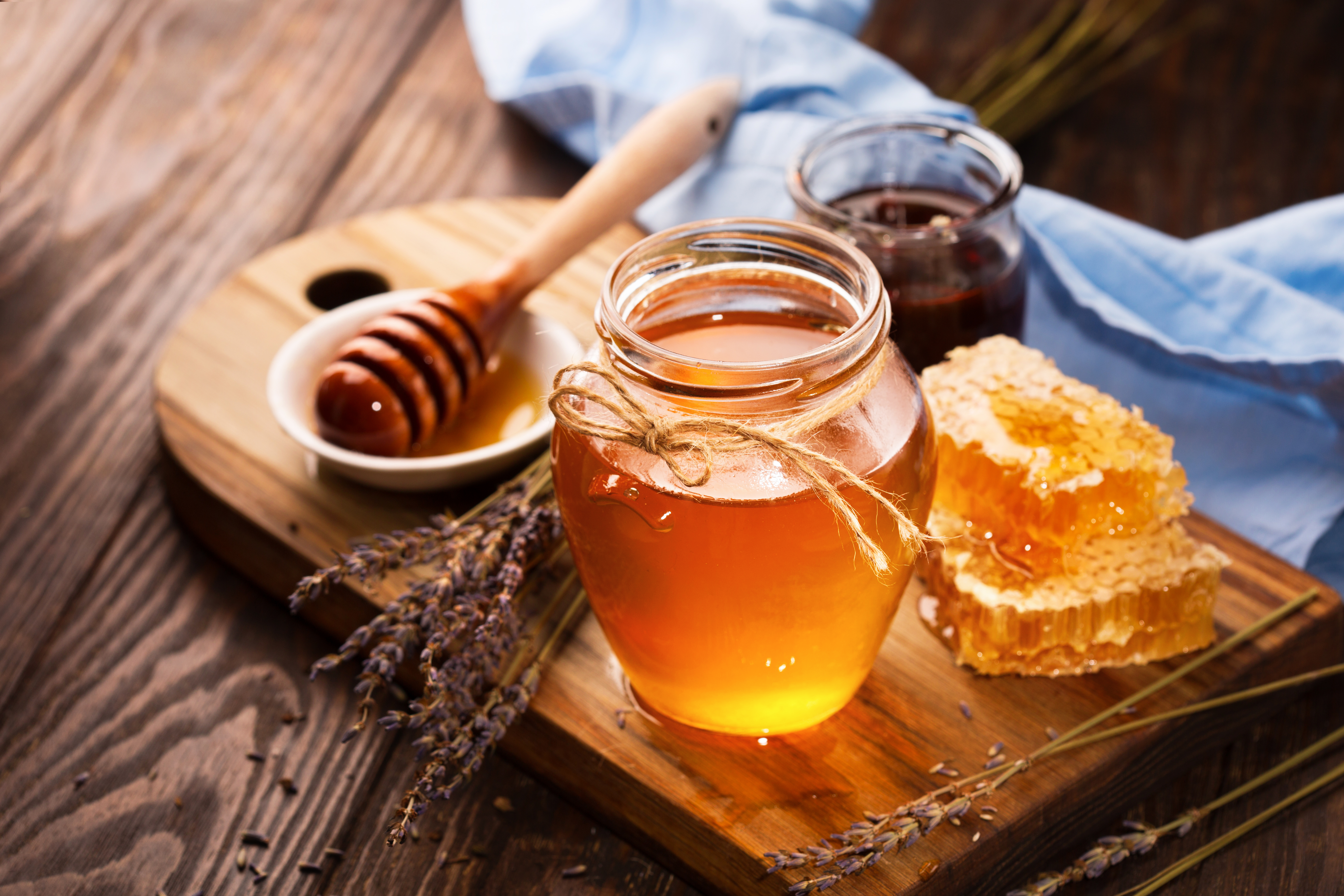Possibly the oldest recognized source of sugar, the use of honey dates back to around 2100 B.C.—beating good old table sugar by an estimated 2,450 years! Many people prefer natural sources of sugar, with honey often making the top of the list. This historic confectionery sweetens many pantry shelves and recipes. Read on as we dive into hype surrounding honey.

Is Honey an Allergy Remedy?
There is conflicting research on honey serving as a remedy for allergies, which demands more research be conducted before solid claims can be made. In a preliminary study, allergy sufferers were given a tablespoon of local unfiltered honey, pasteurized honey or honey-flavored corn syrup daily for 30 weeks. No significant benefits were noted between groups. However in another four-week study, significant benefits were seen in allergy sufferers who were given antihistamine medication along with honey, as compared to the groups receiving the antihistamine and honey-flavored corn syrup.
Is Honey a Sugar Alternative?
Some argue honey is a healthier alternative due to minimal processing as opposed to other types of sugar. However, the body metabolizes honey no differently than it does standard table sugar. When it comes to any sweetener—including sugar, honey, syrup or agave nectar—the body will break it down and absorb it equally, not knowing the difference between types. Bottom line, enjoy honey in moderation!
Does Honey Have Prebiotic Properties?
It has been said honey can also be used as a remedy for diarrhea or gastroenteritis; however there is limited data to support this. Honey contains carbohydrates known as oligosaccharides, which may serve as potentially good gut bacteria. It should be noted that this prebiotic benefit is likely small and not as significant as other rich sources of prebiotic carbohydrates such as onion, garlic, asparagus and bananas.
Does Honey Have an Expiration Date?
There have been archeological findings of 3,000-year-old pots of edible honey in the Egyptian pyramids! It was initially thought this was due to the high sugar content, low pH and antibacterial nature of honey. However, nothing is immune to the effects of aging as honey will lose flavor and harden in consistency. The FDA advises honey be tossed out two years from the date of purchase if it is not refrigerated after opening.
Cooking Purposes
- Besides carbohydrate content, there is little difference between honey and standard table sugar.
- Honey = 17 grams of sugar/tablespoon
- Standard table sugar = 12 grams of sugar/tablespoon
- A 20-calorie difference between the two
- When baking with honey:
- 1 cup of sugar can be substituted for ¾ cup honey
- Reduce all liquids by ¼ and add 1 teaspoon of baking soda for every 1 cup honey called for in the recipe. Due to honey being very dense and viscous, the addition of baking soda aids in leavening, helping the final product rise and be lighter and airy.
- Lower the temperature by 25° F to prevent over-browning
Blog post provided by Gillian White, RDN, LD, CNSC, Cooper Clinic Registered Dietitian Nutritionist
